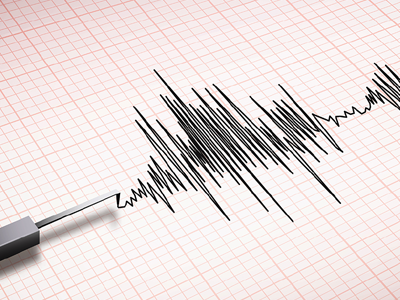Measuring resilience and what it can tell us about PTSD

Bang! A car backfires loudly and your body responds: instant sweat, a spike in your heart rate, disrupted breathing and butterflies in your stomach.
Bang! It backfires again. And again. Each time your reaction is less intense. You become habituated. It turns out that your speed of getting accustomed to a startling stressor is a useful biomarker of your resilience.
Acoustic startle is nothing new, it's one of the most widely used stress induction paradigms. Scientists can measure our autonomic stress response with multiple body sensors, the simplest of which is skin conductance sensor that picks up the activity of subcutaneous sweat glands – one of the fastest stress response systems in the body.
The innovative aspect of new research led by the University of Newcastle in collaboration with Defence scientist, Dr Eugene Aidman is in measuring the habituation. Very few researchers have actually bothered to repeatedly startle people in a controlled fashion to measure how they grow accustomed to the startling noise.
This work on acoustic startle, published in PLOS ONE in 2019 has been a long time in the making. But according to Dr Aidman, the extended gestation has resulted in it being extremely thorough, a very solid foundation and starting block from which to push forward and investigate applications.
Cognitive skill training
In this research, participants heard 15 gunshot-like sounds over 8 minutes, with timing between shots deliberately randomised to make them harder to anticipate. At the same time participants attended to another task (mental arithmetic) that induced mild stress, in order to confirm that the gunshot startle spike was over and above usual daily stresses.
"This research supports the broader research program in cognitive fitness and performance psychology that we're running," Dr Aidman says. "We've found a great collaborator in the School of Biomedical Sciences at the University of Newcastle, a team with an impressive pedigree in research into the human autonomic nervous system. Their science is so mature they've started exploring beyond the clinical applications into the performance and healthy well-being space, which is a rarity."
Importantly, most human stress responses do not depend on the nature of the stressor - a loud bang or anticipation of public speaking produce almost identical body response. The University of Newcastle was successful in securing funding through the Defence Innovation Hub several years ago to extend its startle research, and Dr Aidman was invited to the advisory board to guide it towards Defence-relevant outcomes.
This study is a new milestone, closing out the early promise of the literature that one can develop a bell curve of resilience beyond the well-defined clinical population.
"Early studies discovered that these "habituation slopes" were sensitive enough to distinguish Post-Traumatic Stress Disorder (PTSD) patients from healthy controls – and more importantly, from other clinical groups such as anxiety and depression (PTSD patients did not habituate at all). Our new study shows that the same habituation slopes can discriminate between high-and low-resilient individuals in the healthy population, with no clinical diagnosis, but some of whom may be at risk. This is quite remarkable, offering an objective method to assess PTSD risk that could inform more targeted prevention measures."
Early PTSD detection, then intervention
Clinicians currently rely on self-report and clinical observation to diagnose PTSD and this new knowledge is an incredibly important adjunct to that mix. Army foresees a portable, deployable protocol being available to assess those presenting with early symptoms.
But detection is only half of the story. The Defence Innovation Hub and Army Headquarters are also looking at ways to improve resilience. This includes using virtual reality (VR) for combat comparable stress exposure and using physiological monitoring including this protocol to measure training gains. Participants could practise cognitive techniques in the safe VR environment, with options for cranking up the fear factor.
Dr Aidman sees research efforts from various directions now converging, creating a range of very promising, actionable and potentially deployable intervention techniques.
"The field has really exploded. The science has matured enough so that scientists with very good fundamental research pedigrees can put their hand up and say, 'We can have a go at translating our science into applications within a defence context'."

